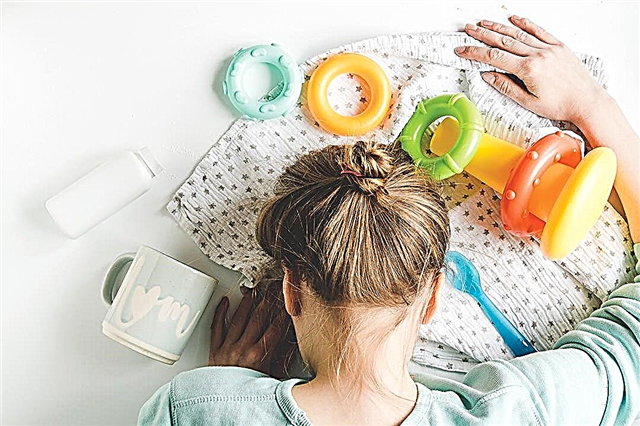
The birth of a child is a very pleasant event, but a woman's body in the process of childbirth undergoes severe overloads, stress, and therefore the increase in temperature after childbirth can be quite understandable. At the same time, it is this symptom that may indicate that the postpartum woman has had certain complications.
In this article, we will try to understand the causes of fever after childbirth.

Causes
Childbirth is always associated with pain and some blood loss. In response to this, the woman's body activates the immune defense. A slight increase in temperature in a postpartum woman after the birth of a child is an absolute norm. Physiological temperature, which should not cause excitement and fear, should not be high and prolonged.
An acceptable temperature is considered to be at the level of 37.0-37.8 degrees within a day or two after childbirth.
Gradually, if there are no complications and the postpartum period proceeds normally, the immune defense adapts, the temperature drops to normal values. You just need to wait a little - the early postpartum period lasts up to 42 hours.

A thermal defense reaction can also manifest itself as a response to a complication. The risk of infection with vaginal delivery is lower than with caesarean section, but it also exists. If bacteria or viruses have penetrated into the uterine cavity, then an increase in temperature will be the work of immunity, aimed at destroying them. In this case, the heat plays an important role, without it, the production of natural interferon will be slower, which means that the body will be weaker to resist bacteria and viruses.
Complications of an infectious nature, inflammatory processes in the uterine cavity in most cases are accompanied by high fever - up to 38.0-39.0 degrees.
The temperature can rise as early as 2-3 days after childbirth. At the same time, abnormal discharge from the genitals appears, the woman feels soreness in the uterus, in the lower abdomen.
To a greater extent, complications after childbirth are susceptible to women who give birth at home, in dubious clinics, where some standards of sanitary requirements may be ignored. In an obstetric institution or a perinatal center, the risk of infection is low - today, most of them use disposable instruments, antibiotics and antiseptics of a new generation.

The risk group for the possible development of postpartum complications includes:
- women with very low body weight;
- women in labor with HIV infection, tuberculosis, blood diseases;
- women who, in the last trimester, began to suffer from infectious lesions of the reproductive system;
- women whose childbirth was difficult and long, especially if the anhydrous period (after the discharge of amniotic fluid) lasted more than 12 hours;
- women in labor who are faced with the need for any surgical manipulations during the birth of a baby, even if it was just a dissection of the perineum;
- women who led an inappropriate lifestyle before giving birth - they took alcohol, smoked, and used drugs.

The reasons for the increase in temperature can be not only infectious complications in the postpartum period, but also some other situations:
- a cold or a viral infection of the respiratory plan (it was cold in the delivery room, someone from the medical staff or those around the woman was sick with ARVI at the time of birth, but he himself did not know about it);
- problems with the balance of hormones (if the mother has endocrine disorders).
The temperature can also rise due to an exacerbation of a chronic disease, if a woman had it even before pregnancy. Immunity weakens after childbirth, and therefore some "dormant" ailments may well again make themselves felt. With an increase in temperature in the postpartum period, pyelonephritis, nephritis, exacerbation of peptic ulcer disease, cystitis can occur.

On the 3-5th day after childbirth, the reason for the increase in temperature may be violent processes occurring in the mammary glands and associated with the onset of active production of true breast milk after the transition.
Stagnation of milk in the glands, mastopathy are also accompanied by pain in the chest and high fever, which lasts until the problem is eliminated.
The reason for the increase in temperature may be incomplete discharge of the placenta. In a caesarean section, the doctor separates the "baby's place" manually, and before suturing the uterus, conducts a thorough revision. In natural childbirth, it is almost impossible to see if the entire placenta has departed. The remaining small fragments of it can lead to a strong inflammatory process in the uterine cavity, to bleeding. Also, an increase in temperature is accompanied by uterine hypotension, in which the reproductive organ contracts poorly and too slowly. In this case, the accumulation of lochia occurs in the uterus - postpartum discharge.


If the temperature has risen after discharge from the hospital, a month after giving birth, the reason must be sought in the woman's lifestyle - she could become infected with a viral infection, it is possible that the mother is chronically not allowed to sleep, she is tired. Even prolonged fatigue can be accompanied by fever and chills, and this is not unusual.

Measurement features
After childbirth, it is no longer possible to measure body temperature using the traditional method - due to the proximity of the mammary glands, in which the process of milk production begins, the thermometer readings in the armpit will be overestimated. They will not be true.
Therefore, a woman is advised to put the thermometer in the elbow, or use a thick waffle towel, laying it between the poured breast and the armpit. It's good if your home medicine cabinet has a non-contact thermometer.

Woman's actions
Leaving the fact of an increase in temperature after childbirth unnoticed, ignored and underestimated in any way. Given that thermoregulation disorders can be a sign of complications, you should definitely talk to your doctor about this. Some women deliberately keep silent about the overestimated readings of thermometers on the round in the hospital. This is done so that the discharge is not postponed until a later date.
Such actions are unacceptable, because the complication, if it has arisen, will still make itself felt. And then the woman, after discharge, will have to temporarily part with the baby and go to the hospital for help.
Almost all complications after childbirth require medical intervention and treatment. That is why, in the first 42 hours after giving birth, women measure the temperature three times a day in the obstetric facility, monitor her health and condition, and help with latching the baby to the breast.

What should be reported to the treating doctor? First of all, that the temperature has risen. The specialist will definitely watch closely how long the increase will be. A short-term single case of fever after childbirth is quite acceptable for immunological natural reasons. Prolonged fever, even if the temperature is low enough - about 37.0 degrees, can be a dangerous symptom. And therefore, the postpartum woman cannot understand this without a specialist.
If the temperature rises in the early period before discharge, the woman will be sure to take a blood test and an ultrasound scan to determine the cause of the fever. Ultrasound examination allows you to establish the size of the uterus, the presence of foreign inclusions inside it (fragments of the placenta, for example).

What to do with a high fever will depend on what caused the increase. If the matter is in the inflammatory process, the woman will be prescribed treatment with antibiotics, anti-inflammatory drugs. Hypotension of the uterus requires the use of contraction drugs that will intensify the contractions. If stagnation of lochia or fragments of the placenta is found in the uterus, obstetric cleaning is recommended. It is performed under intravenous anesthesia.
If, during the stay in the hospital, the body did not present surprises, and at home, after discharge, there was a fever, chills, headache, you should pay attention to the accompanying symptoms. If the throat hurts, the woman is more likely to catch a cold, if there is pain or pain when urinating, there is a chance of cystitis. The most dangerous pains are considered abdominal pains in the abdomen.

If abdominal pain occurs in combination with fever, if abnormal discharge from the genitals appears, you should go to the hospital as soon as possible. Do not forget that acute inflammatory ailments of internal organs in their most advanced form can lead to the development of systemic sepsis.
The mammary glands also need a medical examination against the background of an increase in temperature. If on the 5th day after childbirth a high temperature rises and the chest hurts, you need to see a doctor as soon as possible, because neglected mastitis can threaten a woman's life. The woman may need surgery.
Immediately after childbirth, the temperature rises mainly for physiological reasons. After the end of the first rehabilitation period (42 hours), any increase in temperature cannot be considered physiological.

Can I take medicine?
In most cases, as mentioned, complications will require medication. But not all of them are combined with breastfeeding. If a woman needs, on the recommendation of a doctor, to temporarily stop breastfeeding because of the heavy antibiotics that she needs, because of the necessary surgical intervention, then you should not quit expressing the breast, otherwise milk will disappear completely or lactostasis will develop.
Modern effective antibiotics rarely require a course of treatment lasting more than 7 days. Most often they are prescribed for 5 days. Therefore, a woman may well return to breastfeeding after treatment.

If there is no need for antibiotics, anti-inflammatory, hormonal drugs, antipyretics can be recommended for a woman. Not all of them are allowed during the period of breastfeeding. In each case, the doctor will proceed from the principle of least harm to the child and maximum benefit to his mother.
From the temperature during lactation, it is allowed to take "Paracetamol" and "Ibuprofen", although with regard to the latter drug, there have been heated debates in the professional environment recently. An international group of scientists announced the long-term harmful effects of the active substance, ibuprofen, on the human body. So far, these data have not received official confirmation.

Aspirin and analgin, when passed into breast milk, can pose a serious danger to the life and health of the baby. Therefore, they are not recommended for breastfeeding.
Antipyretic powders with fruit aromas, which are now widely available on pharmacy shelves, are also not recommended, since they contain a large amount of dyes that are not shown to a nursing mother and her child.


Traditional methods
Given that most of the medicines are prohibited, many mothers try to adhere to folk advice and recipes of traditional medicine. In the case of acne after childbirth, this is quite acceptable, but in the case of an elevated or high temperature, self-medication is unacceptable.
Even if a woman has a banal ARVI, rubbing with vinegar and tea with honey will not be useful, because both vinegar vapors and bee products can be dangerous for the baby.
But a woman can use an abundant warm drink at a temperature - to reduce fever and strengthen the immune system, chamomile decoction, tea with mint and lemon balm, apple juice will help.

You can learn more about the temperature in nursing mothers from the following video.



